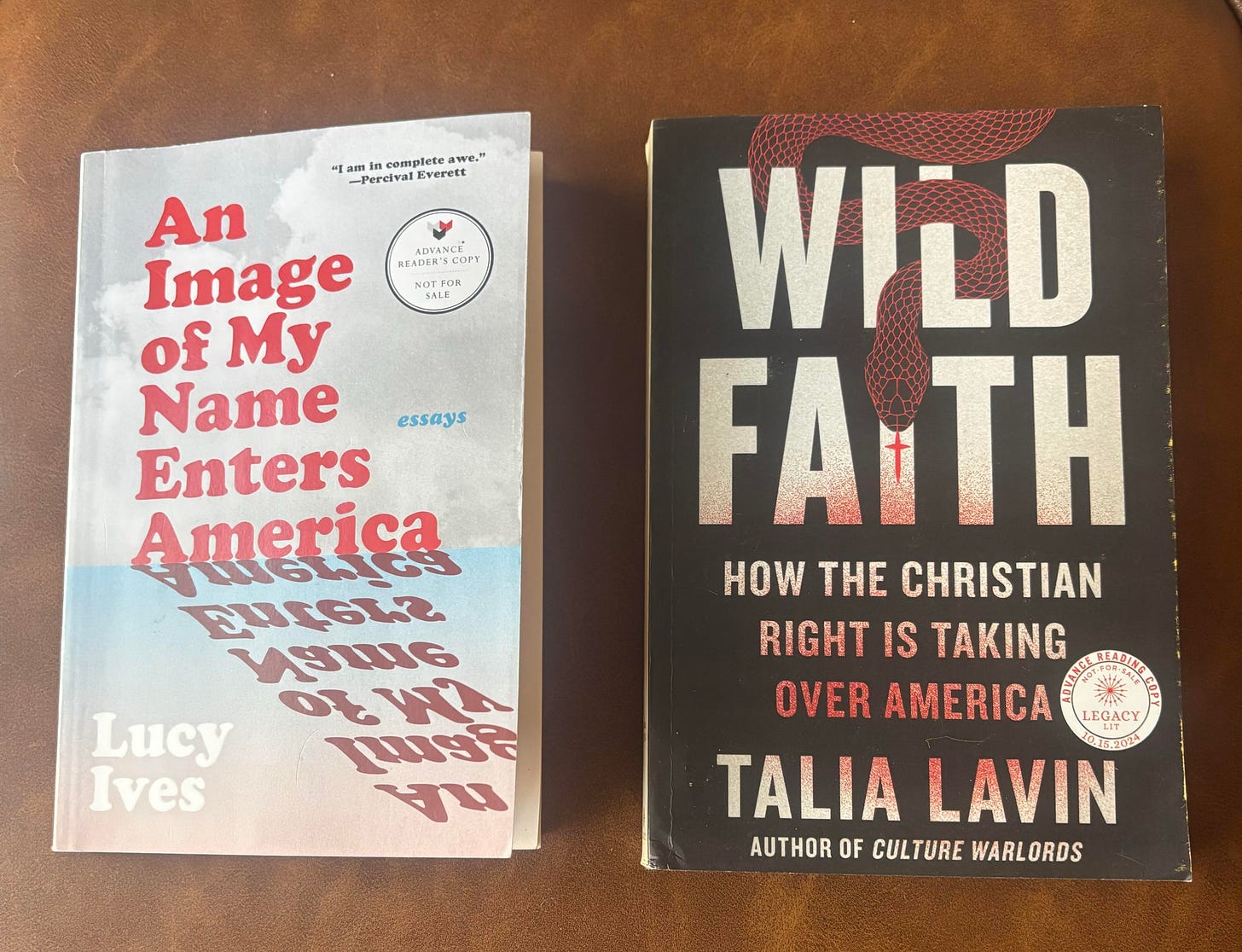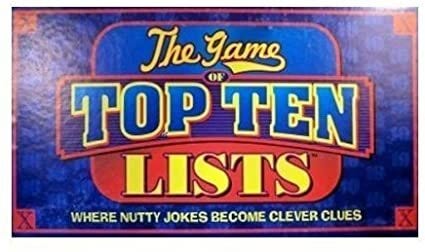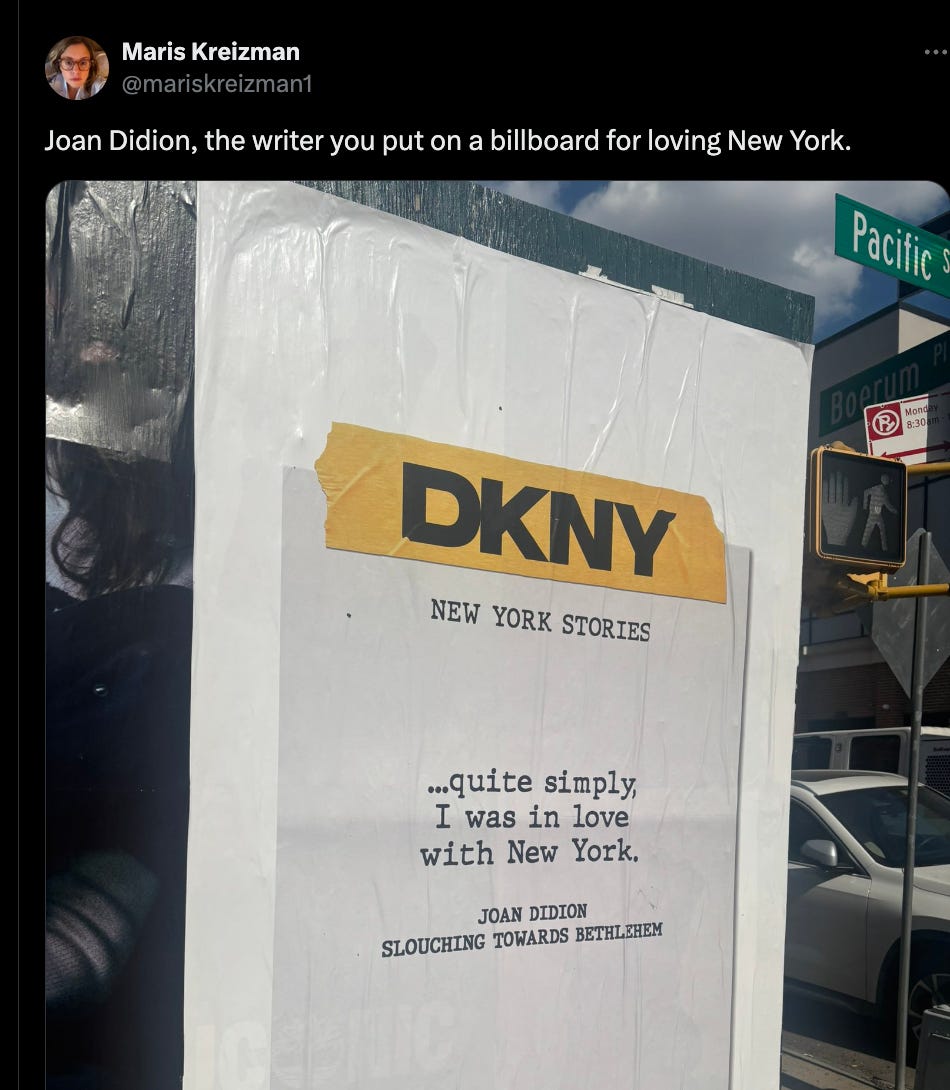The Maris Review, vol 27
You will either come away from this with new insight into the quagmire of contemporary book coverage, or you will simply see me as an overthinker extraordinaire with not enough hobbies.
What I read this week
An Image of My Name Enters America: Essays by Lucy Ives
Now this is my shit. I’m a sucker for an essay collection that explores popular culture through a personal lens as well as an academic one, and this one from novelist and poet Lucy Ives spans agilely from the intimate to the historical to the theoretical. She brings an astonishing level of acumen to all.
Truthfully, this is the book I wish I could write if only I were a better intellectual. I have never studied theory. I think in college I thought Comparative Lit meant a course of study in which students compared a bunch of different books all at once, and one at a time was plenty for me back then. My education in theory mostly comes from reading contemporary books that reference the theorists: my understanding of the philosophies of Lacan and Derrida and Barthes has mostly trickled down from my reading of other very smart books. Lauren Berlant’s Cruel Optimism sits on my shelf unopened but I feel as though I’ve already read it, so often is Berlant’s work cited in recent creative nonfiction that I’ve loved.
This was a roundabout way of saying that I was very much knocked out by all of the esssays in this volume, but especially the one about linguistics, Reality Bites, irony (Alanis Morissette, of course), apocalypse, delusion, and feeling something in the pit of your soul that you don’t have the vocabulary to articulate just yet…
Wild Faith: How the Christian Right Is Taking Over America by Talia Lavin
Look at just about any newspaper headline in recent years and it becomes clear that, if ever church and state were separate entities, then the line between them is ever diminishing. Such a topic could make for a thoroughly miserable read, but it’s a testament to Talia Lavin’s skill as a writer, with meaty (sorry!) prose and witty commentary that she makes thoroughly enjoyable what’s otherwise deeply unsettling. For instance, in describing the way in which Christian Zionists influence foreign policy only with the hopes that the Jewish people can then die out and Christ may one day rise again, Talia Lavin writes: “Zionists love Jews like a hungry man loves a chicken wing; it’s an interest born out of need whose end is total consumption.”
On writing year-end lists
This year I’m writing a best books of the year list for a publication I won’t name (but it’s pretty easy to Google) and my selections were due yesterday. Thankfully, I have a little longer to agonize about what each individual blurb will say.
I thought I’d break down some of my concerns as I went about choosing the titles: you will either come away from this with new insight into the quagmire of contemporary book coverage, or you will simply see me as an overthinker extraordinaire with not enough hobbies. I’ll take the risk.
I’m one person. I have 10 slots to fill (I could go longer and include 12 or 13, but I would get the same amount of money, so I have 10 slots to fill). I read about 2-3 books a week, maybe 75% of which were published during this past year. So for the sake of argument let’s say I’ve read 75-100 books published in 2024. According to Bookscan’s incomplete accounting system, around 767,000 books were published in the US in 2023. In other words, I cover books full time and I’ve only read, at most, around .01% of this year’s books, and I need to pick 10 of them.
But how difficult can it be to pick some favorites from the ones I’ve read? Well, there are many factors to consider.
There are five major publishers, one of which (PRH) is significantly larger than the others. I’d like to avoid doing what the National Book Awards did and choosing more than half of it’s longlist titles for fiction and nonfiction from a PRH imprint. I need some diversity from the larger presses, and I also need to get some smaller presses in there, for the good of the readership and the industry as a whole. Then there’s diversity of imprints from within those major publishers to consider. Picking, say, three books from Farrar, Straus & Giroux is a bad look.
Now let’s do genre. I read a ton of the genre known as literary fiction, for better or worse, so literary books will make up a great percentage of books I pick. But even from within literary fiction, I want a variety of styles and tone. It’s no good to feature, say, three different realist novels with minimalist prose. I’ve also gotta make sure nonfiction is properly represented. If I’m drawn to works of criticism and memoir, is it okay to set aside the history book of the moment? Do I include a book of poetry? Have I even read enough of the poetry that’s been published this year to make an informed decision?
Always, always I ask myself if I have diverse representation of authors’ ethnicities and backgrounds.
More: Do I throw readers a bone and give them a title that I happened to love and that they’re expecting to see (All Fours?)? Do I offer some taste validation to readers, or do I go balls out and risk that my list will be too obscure? Will my list feature too many women and not enough men (no, who cares, this is just my reminder to never read the comments)?
All of this is to say that end of year lists are very arbitrary, they’re a ton of work, and they don’t pay nearly enough. Be kind to your local book critic.
I’m begging the brands to finish reading the essay
New releases, October 22
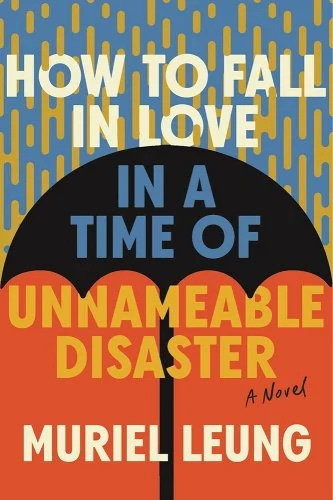
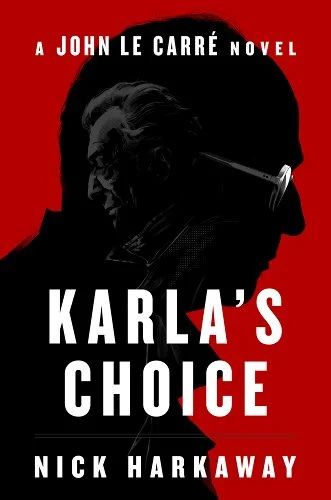
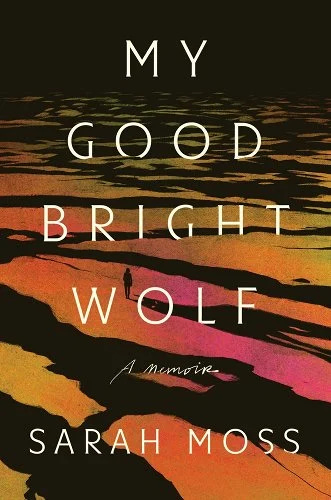
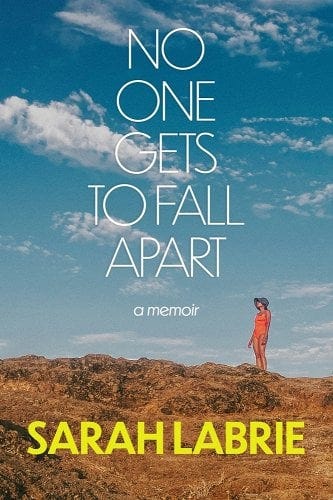
How to Fall in Love in a Time of Unnameable Disaster by Muriel Leung
Karla's Choice: A John Le Carré Novel by Nick Harkaway
My Good Bright Wolf: A Memoir by Sarah Moss
No One Gets To Fall Apart: A Memoir by Sarah LaBrie
A burning question about the NYT bestseller list:
Keep reading with a 7-day free trial
Subscribe to The Maris Review by Maris Kreizman to keep reading this post and get 7 days of free access to the full post archives.




